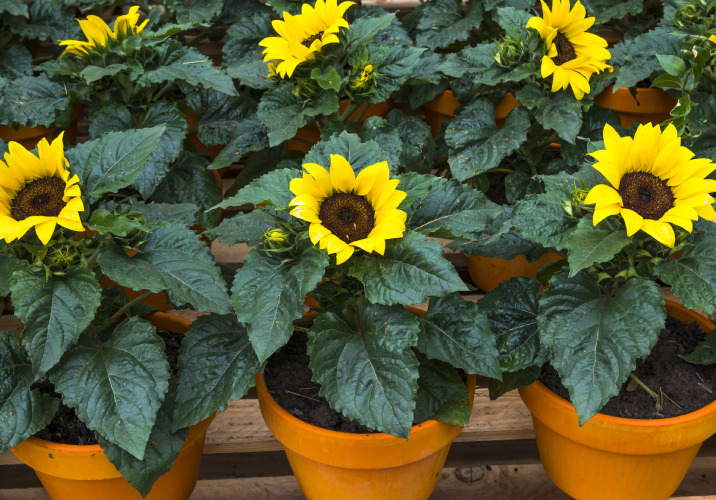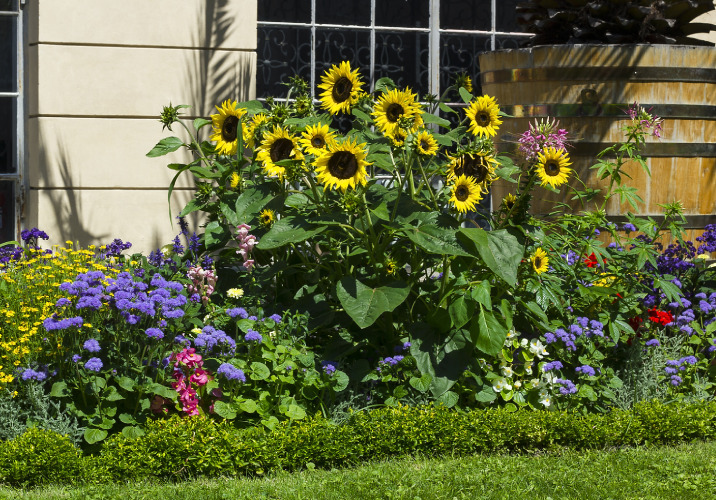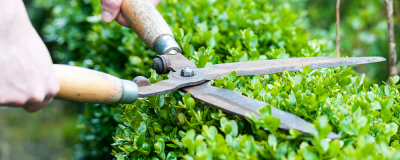
Find a local gardener
- Inspiration /
- Outdoor projects /
- Gardening & landscaping /
- How to grow sunflowers
How to grow sunflowers
Brighten up your backyard with this guide
Sunflowers are one of the most beautiful plants that you can grow at home. As long as they have enough light, they can shoot straight up in the air with bright yellow flowers that point towards the sun. Before running out and buying some seeds or plants, give some thought to how you’ll grow this flower and make sure that you have the right lawn or garden.
How to grow sunflowers
Sunflower soil
The first thing to know about growing sunflowers is the soil that you need. You’ll have the most success if you have a low to mildly acidic soil. It should have a pH of 6.0 to 7.5. Most home improvement and landscaping stores have kits that let you test the acidity of the soil.
If you find that your soil is more or less acidic, consider growing sunflowers in pots. Using pots gives you more control over the soil and allows you to make sure that you have the right soil. You can always move the pots to provide the plants with more sunlight too.
When to plant sunflowers
The sunflower season in Australia typically starts in early January and ends around the middle to the end of March. People come from all around the world to see the fields in bloom.

How to plant seeds
When you choose seeds rather than plants, you want to plant each seed between .38 and 6.3 centimetres deep in the soil. This distance puts the seeds close enough to the surface that they get the light that they need but deep enough that they absorb the necessary nutrients from the ground. Though you can plant them deeper in the soil, this is the optimum depth.
While a field of sunflowers in bloom can turn heads and create an impressive display, planting the flowers too close together will keep them from growing. The plants fight with each other to get the nutrients they need. As they grow, they will not get the sunlight that they need either.
You’ll want to plant the seeds around 15 centimetres apart from each other to give them enough space. If you’re going to plant a field, use up to three plants per row.
Companion planting
Companion plants let you create a better sunflower garden or landscape. Most lettuces are a good choice because they don’t need the same nutrients and won’t get in the way of the flowers. Lettuce also makes a great ingredient in many dishes. Other companion plants that you can choose include squash, kale, onions and cucumbers.
How long do sunflowers take to grow?
You may want to know how long it takes sunflowers to grow because you want to know how quickly you can enjoy the blooms. These plants take an average of 80 to 120 days to grow from seed. Plants take between 60 and 80 days to bloom.
Looking after sunflowers
Water and sunlight requirements
Sunflowers are an excellent choice for Australian gardens because the plants do not need a lot of water. During the germination process, the seeds need roughly 2.5 centimetres of water every week. Even if you forget to water them daily, they should still thrive.
Once you have sunflower plants, you’ll want to use around 15 centimetres of water per week. When watering the plants, use a nozzle that gives you more control and aim it in the direction of the plants. Add enough water that the top few centimetres of the soil are moist. As the soil absorbs the water, it will reach the roots of the plants.
As sunflowers grow, the flowers start pointing towards the sun. The plants need a minimum of six hours of sunlight every day up to eight hours. If you use pots, you can move the plants into a spot where they’ll get more sunlight.
Contact local gardeners
Pests to look out for and protect against
Certain types of pests can attack the sunflowers in your yard. Many of these are insects that will eat the leaves and flowers as well as the roots and stalks. Beetles and maggots are incredibly common. It would help if you also watched out for caterpillars and some types of moths.
If you worry that you can’t leave the sunflowers alone in your yard, using a pesticide can help. Organic pesticides work well and will not damage any nearby plants.
Staking sunflowers
The biggest problem with growing sunflowers in Australia is that the stalks aren’t strong enough to support the weight of the blooms, which is why you need to use stakes. Choose stakes that are roughly half the height you expect the finished plants to grow to give them enough added strength. Giant sunflowers are much larger and need stakes that are both taller and wider. You can use gardening twine to secure the flowers to the stakes.

Harvesting and pruning
You typically want to prune a sunflower plant twice a year. Pruning this often ensures that the flowers have the space that they need and won’t grow into each other. The best time to prune the plants is in late January or early February. You need to remove the leaves growing on the stalks and any smaller flowers sprouting on the sides.
Harvesting the finished plants allows you to create bouquets for your home and others. As long as you have good pruning shears, you can easily remove the blooms on the top of the stalk.
If you want to harvest the seeds for next year, remove the flowers from the stalks. You’ll then want to put the flowers in a dry spot with the seeds facing up and let it dry for several weeks. Once the seeds turn dark brown, use scissors or shears to remove them. You can then keep the seeds safe until the following season.
How to hire a gardener
Licensing and qualifications
You want to look for someone with strong qualifications. The C&G Advanced National Certificate in Horticulture and the Horticulture Certificate from the Royal Horticulture Society are just a few of the certificates that Australian gardeners may have. You can look up a gardener by his or her name or the license number that the person has to make sure that they have the qualifications that you need. Hiring a gardener can cost $50 to $100 based on what you need. They can handle everything from planting your sunflowers to harvesting them at the end of the season. Check on the licensing and qualifications that local gardeners have today to get help with your sunflowers.
How much will your job cost?
The Oneflare Cost Guide Centre is your one-stop shop to help you set your budget; from smaller tasks to larger projects.



